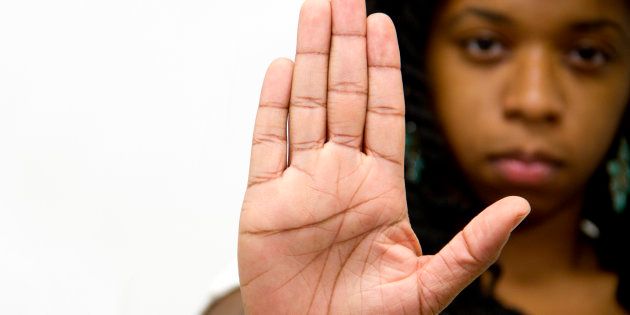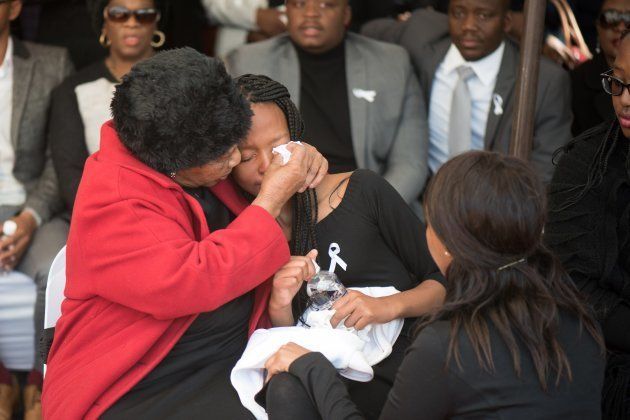
One in three women worldwide experience sexual or physical violence, from intimate partners or others. In South Africa, the rate is higher, partly due to high levels of crime. Although women of all races and classes experience violence, black women are thought to be the worst affected, and are also more likely to be poor and unemployed.
Every year, people from around the world work to end such violence. The "16 Days of Activism" campaign is an annual, worldwide effort that symbolically joins the International Day for the Elimination of Violence against Women (on 25 November) to Human Rights Day (10 December). This period is dedicated to raising awareness of and ending violence against women and children (VAWC).
This year marks the 19th anniversary of the campaign's adoption in South Africa. However, 19 years later, the government's campaign slogan, "Count me in: together moving a non-violent South Africa forward", seems increasingly far from being reflexively processed and effected.
The institutions of family, marriage, religion, education, government, workplace and economy are among those that should provide support for women and children –– but they are also the perpetrators and sites of violence against women and children.
For example, domestic violence and incest can occur within families, just as sexual abuse can take place within religious or educational institutions. The government, economy and workplace can serve to exclude, exploit and violate women and children, making them more likely to experience violence.
Social institutions are also interconnected in many ways. It is these connections that can serve to reinforce exclusion and vulnerability, thus making violence more likely. This intersection among institutions can also indicate the crosscutting nature of various forms of violence in a single case.
In addition to sexual and physical violence, mental abuse, emotional suffering, limits to freedom, economic abuse and any acts of harm or intimidation that take place in the private and/or public domain also qualify as violence against women and children.
For instance, a female minor was sexually assaulted by a female teacher in Upington, and more than 50 minors were sexually assaulted by a school security guard in Soweto. The social institutions of the government, justice system, education and security industry intersected in these cases.
These minors were failed by the presiding systems and structures. Their innocence and childhood were stolen in supposed safe spaces through sexual, mental, physical and emotional abuse.
A few months ago, social media was flooded by the #MenAreTrash campaign, which was started as an outcry against the indignities perpetrated against women as cases of femicide became more visible.
Countless women experience horrendous things behind the mostly impenetrable "maximum security" walls of the family, where secrecy is the age-old myth that perpetuates violence.
The case of Karabo Mokoena came to light at the height of this campaign. She was in an abusive relationship and went missing. Her burnt body was later discovered. Many women face these violent conditions daily, and it has become close to home for me as a black woman.

Social institutions should protect victims to ensure that they are not further victimised. Yet the institutions themselves are staffed with people who are raised in patriarchal environments, who may consider women and girls inherently less valuable than their male counterparts. Consequently, victims are often failed by the institutions that should assist them.
This has especially become evident in religious institutions, among others. South Africa is a religiously diverse country, but some religions unite in motivating women to be submissive while encouraging men to be dominating. This provides the permission for violence to occur in religious as well as familial settings. Violence is also perpetrated and perpetuated through a false sense of respect, acts to show allegiance, not wanting to be stigmatised, dependence and servitude.
As institutions are frequently at fault, for both primary and secondary abuse, there is a need for better regulation of state and parastatal institutions. Beyond acts and policies that are reactionary in nature or that fail at implementation, there is a need for the promotion of safety of women and children through structural and systemic policy formation, implementation, monitoring, evaluating and regulation. This will need institutional and ecological systems to intersect for sustainability.
Women and children should not be left saddled with the additional burden of broken institutions. Yet this is a common message around violence against women and children.
In fact, some leaders and campaigns have solely focused on knowing rights and reporting their violation, not keeping silent, using personal agency to break the cycle of violence, etc.
This common message seems to represent a desensitisation around VAWC. It denies that institutions are accountable, and shifts responsibility to the victim. Why has violence prevention and redress become women's duty, when there are institutions set in place for this?
This normalisation leads to unempathetic responses that place responsibility for the prevention and eradication of VAWC on women and children. It has also led to a toxic culture of blaming the victim.
Losing sight of who and what the campaign is against can undermine the whole movement. Women and children, as rightful citizens of the world –– of South Africa –– cannot be loaded with the burden of ensuring their safety, because structures and systems are failing them.
There is a place for personal agency and empowerment. But VAWC has become endemic in our society and requires the recognition of women and children's right to life, dignity, security, and freedom from intimidation and threat. Woman and children are least able to ensure their own rights based on their global marginalised status and vulnerability.
Social institutions started out as structures for prescribing rules of behaviour in society and in the family, but they also ended up becoming instruments of oppression and abuse. This influence, both good and bad, has trickled down into the fabric of society throughout history and has become part of social norms. These very institutions, consisting of people, can be the drivers of change in the fight against VAWC.
Gezina Hoxobes is an Intern Psychologist at the Centre for the Study of Violence and Reconciliation.
